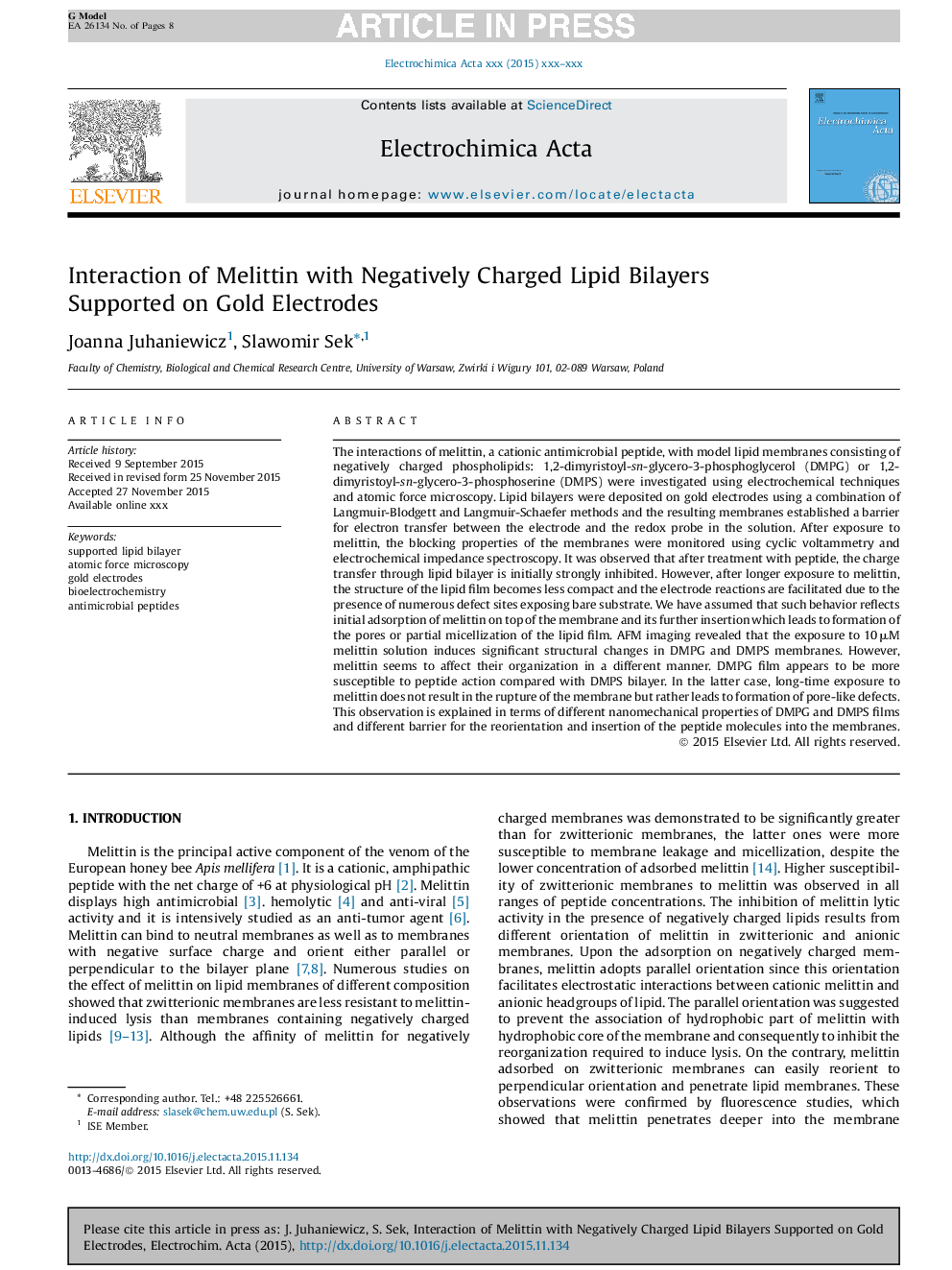| کد مقاله | کد نشریه | سال انتشار | مقاله انگلیسی | نسخه تمام متن |
|---|---|---|---|---|
| 6608111 | 459535 | 2016 | 8 صفحه PDF | دانلود رایگان |
عنوان انگلیسی مقاله ISI
Interaction of Melittin with Negatively Charged Lipid Bilayers Supported on Gold Electrodes
ترجمه فارسی عنوان
اثر متقابل ملتیتین با دوازده لیپیدهای مضر با بار مثبت بر روی الکترودهای طلا
دانلود مقاله + سفارش ترجمه
دانلود مقاله ISI انگلیسی
رایگان برای ایرانیان
کلمات کلیدی
لیپید دو طرفه پشتیبانی می کند، میکروسکوپ نیروی اتمی، الکترود طلا، بیوالکترو شیمیایی، پپتیدهای ضد میکروبی،
موضوعات مرتبط
مهندسی و علوم پایه
مهندسی شیمی
مهندسی شیمی (عمومی)
چکیده انگلیسی
The interactions of melittin, a cationic antimicrobial peptide, with model lipid membranes consisting of negatively charged phospholipids: 1,2-dimyristoyl-sn-glycero-3-phosphoglycerol (DMPG) or 1,2-dimyristoyl-sn-glycero-3-phosphoserine (DMPS) were investigated using electrochemical techniques and atomic force microscopy. Lipid bilayers were deposited on gold electrodes using a combination of Langmuir-Blodgett and Langmuir-Schaefer methods and the resulting membranes established a barrier for electron transfer between the electrode and the redox probe in the solution. After exposure to melittin, the blocking properties of the membranes were monitored using cyclic voltammetry and electrochemical impedance spectroscopy. It was observed that after treatment with peptide, the charge transfer through lipid bilayer is initially strongly inhibited. However, after longer exposure to melittin, the structure of the lipid film becomes less compact and the electrode reactions are facilitated due to the presence of numerous defect sites exposing bare substrate. We have assumed that such behavior reflects initial adsorption of melittin on top of the membrane and its further insertion which leads to formation of the pores or partial micellization of the lipid film. AFM imaging revealed that the exposure to 10 μM melittin solution induces significant structural changes in DMPG and DMPS membranes. However, melittin seems to affect their organization in a different manner. DMPG film appears to be more susceptible to peptide action compared with DMPS bilayer. In the latter case, long-time exposure to melittin does not result in the rupture of the membrane but rather leads to formation of pore-like defects. This observation is explained in terms of different nanomechanical properties of DMPG and DMPS films and different barrier for the reorientation and insertion of the peptide molecules into the membranes.
ناشر
Database: Elsevier - ScienceDirect (ساینس دایرکت)
Journal: Electrochimica Acta - Volume 197, 10 April 2016, Pages 336-343
Journal: Electrochimica Acta - Volume 197, 10 April 2016, Pages 336-343
نویسندگان
Joanna Juhaniewicz, Slawomir Sek,
